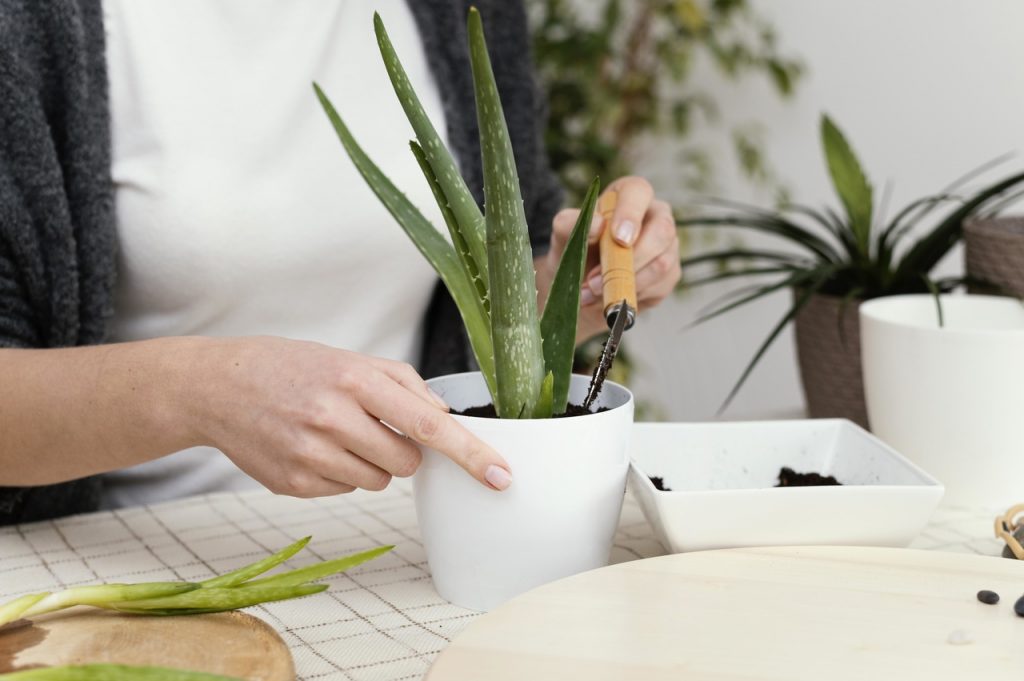Air purifying potted plants are a great option for people who care about their health. Having such plants in the apartment, has very many benefits for the health of the household members.
Air pollution is one of the biggest problems of civilization. Even the cleanest and most well-kept apartment is not free from pollutants that can be very harmful to health.
The most common pollutants in apartments are:

Purifying the air in the home can be done with:
Nephrolepis is one of the most popular fern varieties with ornamental feathery leaves. Nephrolepis is easy to grow but requires regular spraying of the leaves (especially in summer). It requires a position away from direct sunlight. This plant is usually placed on shelves or hanging flowerbeds.
The Canary date palm is also called royal palm. It grows up to 2 m high. It grows best in a sunny or partial shade position. The plant needs regular watering and a constantly moist substrate
Sternberg’s fern is a very popular houseplant, growing up to 45 cm long. It has long narrow bi-colored leaves. The plant has no stand requirements but needs constant humidity
This plant belongs to the palm family and is very slow growing. In home cultivation it grows up to 1m high. It has beautiful feathery leaves. The plant grows best in shady places and can be grown in kitchens – it is resistant to fumes from cooked food. Chamedora requires regular sprinkling of leaves.
Ivy is a climbing plant, which can be grown at home and in the garden. It requires a slightly shaded position. From spring to autumn it should be fertilized with proper fertilizers.
The winged phalaenopsis is a small plant which grows to a maximum height of 40 cm. It requires a shady position and constant humidity. It is advisable to water it with fresh water.
Ficus is a very capricious plant, difficult in cultivation. It needs a bright position with diffused light and regular spraying of leaves and fertilizing.
Dracaenas differ in shape and color of leaves depending on species. They require a bright location with diffused light. They like rooms with high humidity. From spring to autumn they require regular fertilizing.
>> See also: Flowers for living room. Which ones to choose?
Guinea grass is very easy to grow and ideal for forgetful people – it needs very little watering. It grows best in a bright location. It is a poisonous plant for animals.
Aglaonema requires a position with diffused light. The best substrate is palm soil. In summer and spring it needs plenty of watering, in winter it should be watered more sparingly.
Andreego’s Anturium requires a bright location with diffused light. It requires constantly moist, but not too wet soil.
Sprenger’s asparagus (dense-flowered asparagus) requires a bright location with diffused light. It prefers fertile, slightly acidic soils that must be constantly moist.
>> Read also: How to care for ferns, or what you need to know about care?
Hoja pink requires a bright location with diffused light. It needs little watering (only after the top layer of the soil dries out).
Daisy requires a bright location but can also be grown in partial shade. In spring and summer the substrate should always be slightly moist, in winter the watering should be limited
Golden Epipremnum is a climber, which is very easy in cultivation. It requires a bright position with diffused light, although it grows well in the shade.
Aloe vera needs a sunny position. It is an ideal plant for forgetful people – it doesn’t require frequent watering. It grows very slowly but spreads to a very large size.